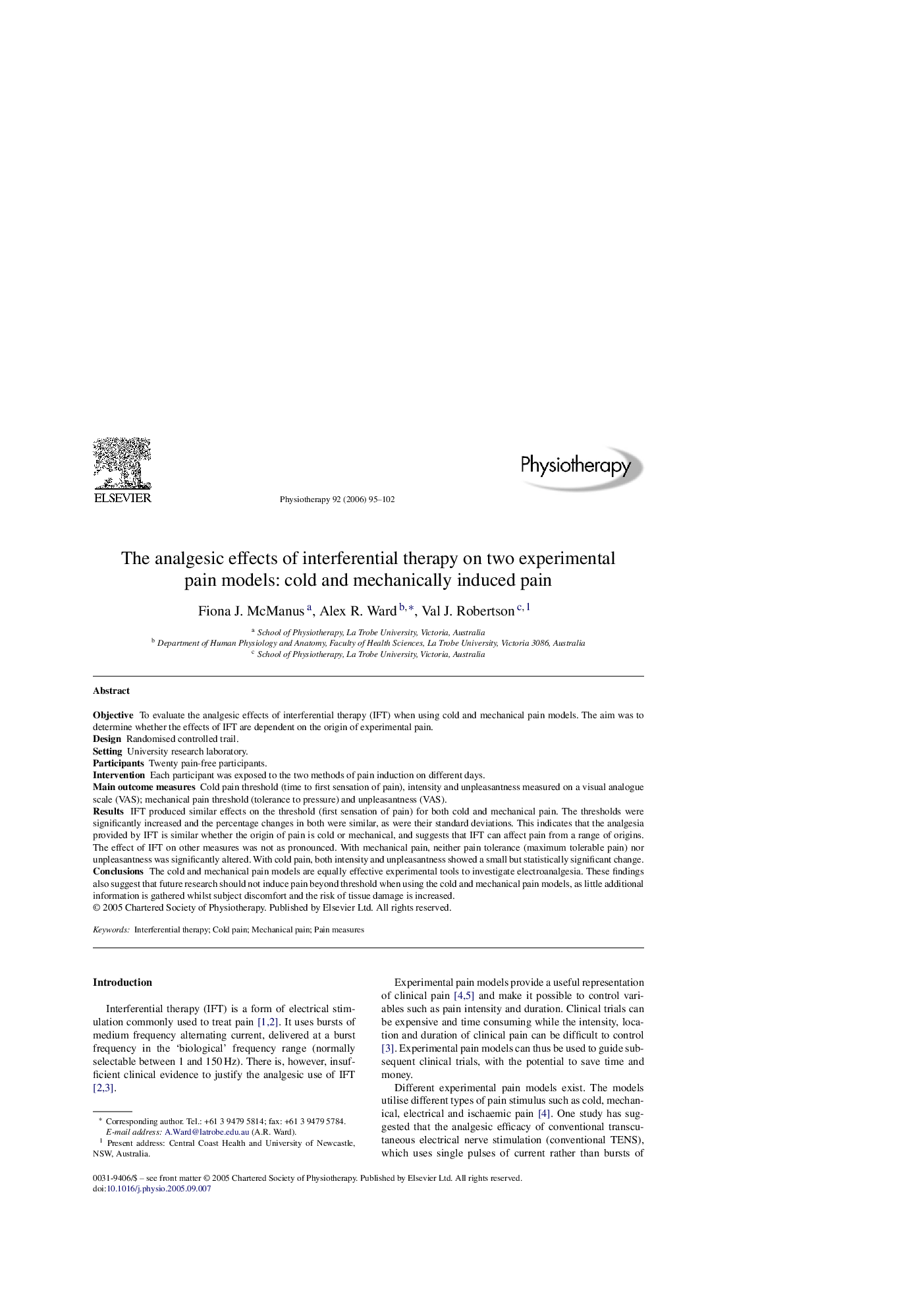| Article ID | Journal | Published Year | Pages | File Type |
|---|---|---|---|---|
| 2627713 | Physiotherapy | 2006 | 8 Pages |
ObjectiveTo evaluate the analgesic effects of interferential therapy (IFT) when using cold and mechanical pain models. The aim was to determine whether the effects of IFT are dependent on the origin of experimental pain.DesignRandomised controlled trail.SettingUniversity research laboratory.ParticipantsTwenty pain-free participants.InterventionEach participant was exposed to the two methods of pain induction on different days.Main outcome measuresCold pain threshold (time to first sensation of pain), intensity and unpleasantness measured on a visual analogue scale (VAS); mechanical pain threshold (tolerance to pressure) and unpleasantness (VAS).ResultsIFT produced similar effects on the threshold (first sensation of pain) for both cold and mechanical pain. The thresholds were significantly increased and the percentage changes in both were similar, as were their standard deviations. This indicates that the analgesia provided by IFT is similar whether the origin of pain is cold or mechanical, and suggests that IFT can affect pain from a range of origins. The effect of IFT on other measures was not as pronounced. With mechanical pain, neither pain tolerance (maximum tolerable pain) nor unpleasantness was significantly altered. With cold pain, both intensity and unpleasantness showed a small but statistically significant change.ConclusionsThe cold and mechanical pain models are equally effective experimental tools to investigate electroanalgesia. These findings also suggest that future research should not induce pain beyond threshold when using the cold and mechanical pain models, as little additional information is gathered whilst subject discomfort and the risk of tissue damage is increased.
